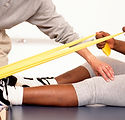Man: 12.00-21.00 Tir-Tors: 07-00 - 16.00 Fre-Lør: stengt
22 51 66 10
Hoffsveien 15, 0275, Oslo
5/5 Poeng i kundescore 🤩
Carpal Tunnel Syndrome
Carpal Tunnel Syndrome (CTS) is a condition which occurs when one of the greater nerves of the underarm, sending and receiving information to and from the hand, comes into squeeze in the wrist.
The carpal tunnel is a narrow tunnel in the wrist, formed by ligaments covering the bones of the hand. Carpal Tunnel Syndrome may occur when the distance between the ligament and the bones becomes too narrow. A compressed nerve in the carpel tunnel could lead to ache, tingling, numbness and lack of feeling. Women, in particular, are exposed to this syndrome which could also be an indication of hypothyroidism, gout, arthritis or myelomatosis.
Symptoms:
-
Aching and pain in the hand and underarm. Often worst at night.
-
Lack of feeling in the thumb, forefinger or middle finger.
-
Weakness or muscle atrohy in specific thumb muscles.
Causes:
-
Previous injuries
-
One-sided work over a period of time
-
Increased accumulation of fluid in the body (e.g. pregnancy)
-
Medical causes such as arthritis, metabolism and diabetes
What to do yourself:
-
Avoid one-sided movements
-
Use ergonomic devices for support
-
Try anti-inflammatory medication
How we can help:
-
Carpal Tunnel Syndrome is complex, with many possible causes.
-
We perform a thorough check-out of possible causes, based on innovative research. Additionally, we analyze how your brain and your nerve system affect the rest of your body, aiming to reduce and remove pain, and obtain long lasting results.
Tennis elbow and repetitive strain injury, RSI
Tennis elbow, or lateral epicondylitis, is a painful inflammation which affect the bone membrane surrounding the tendon insertions close to ulna.
In most cases we see that tennis elbow emerges as a result of long-lasting one-sided work, and often overexertion as with craftsmen. Other one-sided movements of the wrist to result in strain injuries over time, might come from using a PC-mouse, from house painting or from intensive writing.
Apart from overexertion and long-lasting one-sided work conditions, it is normal that our grip muscles “fuels” more than the muscles which stretch out the fingers. The result could be an imbalance between the extensor muscles and the flexor muscles. This can lead to the tendon tissue of the extensor muscles being heavily overloaded.
Symptoms:
-
Pain when moving the wrist outwards, often like a sharp pain which radiates on to the underarm and the fingers.
-
Pain from pressing the enthesis encircling the lateral epicondyle (on the outside of the elbow)
-
Weakness of wrist and difficulties in performing certain movements.
Cause:
-
Long-lasting one-sided work
-
Repetitive writing, painting or use of PC-mouse
-
Severe imbalance of the extensor-flexor muscles
Similar symptoms and pain on the inside of the elbow is often called “golfer´s elbow”. However, tennis elbow occurs 5-10 times more often than the “golf” version.
What to do yourself:
-
Find out what affects your pain
-
Avoid the painful movements as much as possible
-
Avoid inactivity
-
Avoid one-sided work and take small breaks.
How we can help:
-
Having a tennis elbow might imply that the tendon tissue is overstrained from too little or too much activity from the musculature which straighten out the fingers. This activity is for the brain to decide, but it is possible to stimulate the brain to normalize the activity and thus make you more observant of the factors which provoke any unwanted situation.
-
KA Klinikken offers you an overall consultation with extensive tests based on the latest research. We analyze how your brain and your nerve system affect the rest of your body, aiming to reduce and remove unwanted pain, and obtain long lasting results.




